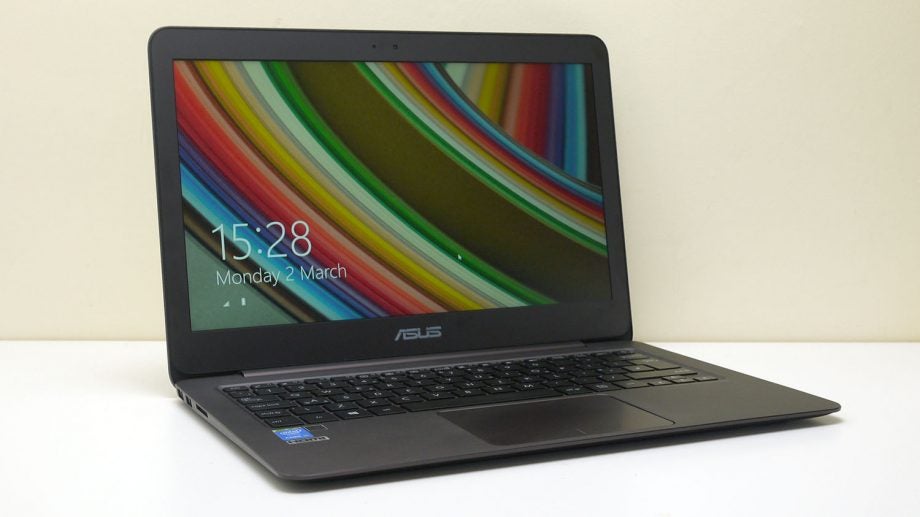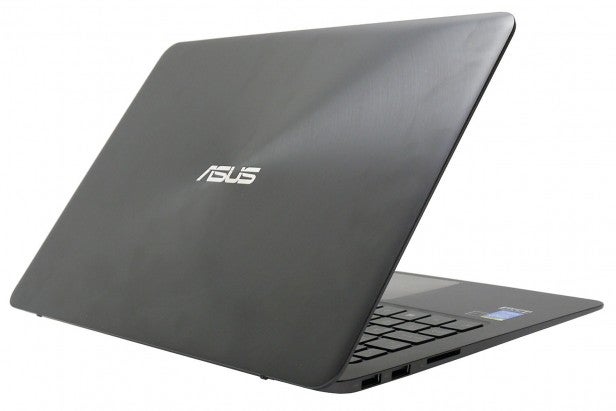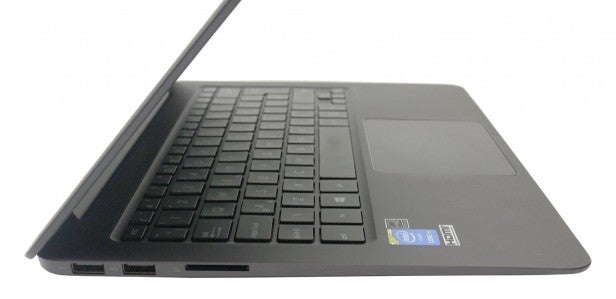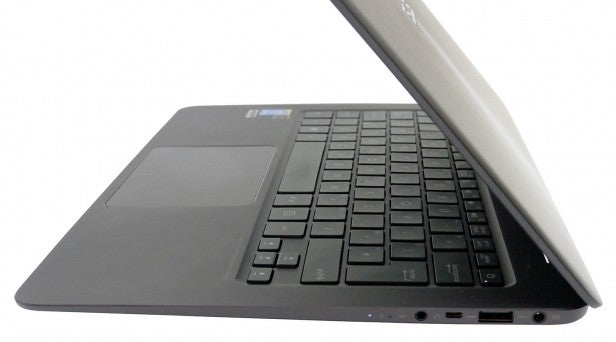Asus Zenbook UX305 Review
Asus Zenbook UX305
One of the most exciting laptops in years

Sections
- Page 1 Asus Zenbook UX305 Review
- Page 2 Screen Quality and Performance Review
- Page 3 Keyboard, Trackpad and Verdict Review
Verdict
Pros
- Incredibly thin and light
- Phenomenal battery life
- Good 1080p screen
- Exceptional value
- Beautifully made
Cons
- Performance is compromised
- Trackpad isn't the best
- No keyboard backlighting
Key Specifications
- Review Price: £649.00
- 1.2kg weight
- 12.6mm thick
- Aluminium construction
- 13.3-inch 1080p IPS LCD screen
- Intel Core M-5Y10 CPU
- 8GB RAM
- 128GB SSD
- 45Wh battery
- 11+ hours battery life
This also appeared to affect battery life; we saw four hours less stamina on the high-end screen version. Performance has stepped up by around a quarter, which is impressive and could be a deal-clincher for some. The laptop also has the same drawbacks as the significantly cheaper model on test here, so the higher price doesn’t quite match the build quality. Below is our original review of the Asus UX305.
What is the Asus ZenBook UX305?
The Asus UX305 is quite simply one of the most exciting laptops we’ve seen in years. It continues Asus’ long line of Zenbook ultrabooks, but really sets itself apart by bringing the same level of build quality and design we’ve come to expect, at a price many more people can afford.
Starting at £649, the UX305 undercuts the majority of ultrabooks by some £350, while it’s £200 cheaper than the entry-level 13-inch MacBook Air. There are a few areas where compromises have been made, but for the most part this is a phenomenal machine.
Watch – Trusted Explains: Laptops vs Tablets, which is best for you?
Asus Zenbook UX305 – Design
Asus has long been the nearest competitor to Apple when it comes to ultrabook design. Right from when it launched its first model, the UX31E, it absolutely nailed the premium metal look and feel, and it’s steadily refined it since.
SEE ALSO: Best Windows 8 Laptops
The UX305 actually takes a slightly different tack to those earliest efforts, largely eschewing the shinier brushed metal look for a more matte-looking etched finish. All, that is, except for the lid which retains the brand’s signature concentric circle pattern. It’s not quite as angular, either, with the corners rounded off like on the MacBook Air.
Regardless, the overall effect is stunning. In some ways the dark mauve colour takes away a little of the immediate ‘premium metal’ vibe when viewed from a distance but up close it’s a marvel, though it does pick up fingerprints easily, so you may want to keep a cleaning cloth to hand.
What’s most striking is its slimness. Thanks to the use of Intel’s latest ultra-low-power Broadwell chips, this laptop is passively cooled, eliminating the need to fit in a fan. This allows the base of this laptop to be just over 7mm thick while the whole thing is only 12.3mm at its thickest.
What’s more it weighs just 1.2kg. This compares to 1.36kg for the 13-inch MacBook Air, while that model is also a fair bit thicker at 17mm.
SEE ALSO: Best Laptops, Ultrabooks and Hybrids
![]()
Asus Zenbook UX305 – Features
What makes this thin and lightness doubly impressive is that Asus hasn’t skimped on connectivity, indeed it’s better than many ultrabooks.
Whereas many ultrabooks have only two USB ports, the UX305 has three, and they’re all USB 3.0. There’s also a full-size SD card reader, a microHDMI and of course a headphone jack. A couple of pin-prick lights on the right edge indicate that the laptop is charging and if it’s on.
You don’t get a wired network connection, but Asus includes a USB Ethernet adapter and there’s inbuilt 802.11 b/g/n/ac Wi-Fi.

You also get a 13.3-inch 1080p IPS screen above which sits a 720p webcam. A QHD (3200 x 1800 pixels) option, which we previewed here, was set to arrive too, but it looks like nowhere is going to stock that model any time soon.
The headline feature here, though, is the Intel Core M-5Y10c processor. This is a fully-fledged Broadwell part in terms of its power saving features, so it positively sips power, but performance wise it is a far cry from Core i5 or i7 branded models.
The most obvious limitation is clock speed, which is restricted to just 998MHz. It can boost up to a maximum of 1.9Ghz but this is can only achieved temporarily in some single-threaded applications.
SEE ALSO: Windows 10 is coming, here are our thoughts so far

SEE ALSO: Best Free Antivirus: Windows Defender vs AVG, Avast & Avira
It also only features Intel HD 5300 graphics, which is much slower than the HD 5500 or HD 6000 used in the higher power chips.
The upshot is that performance is down compared to the likes of the MacBook Air 13-inch and other more premium and thicker notebooks.
Conversely, because the chip is so frugal it has a TDP of just 4.5W compared to the 15W of a Core i5/i7 product. Not only does this mean Asus can get massive battery life from a smaller battery, but it also allows the laptop to be passively cooled so its thinner and has no fan noise.
How we test laptops
Unlike other sites, we test every laptop we review thoroughly over an extended period of time. We use industry standard tests to compare features properly. We’ll always tell you what we find. We never, ever, accept money to review a product.

